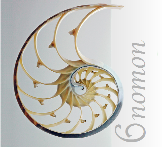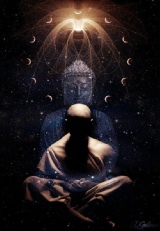



 NEXT
NEXT
 BACK
BACK
 Forum
Forum


Philosophical musings on Quanta & Qualia; Materialism & Spiritualism; Science & Religion; Pragmatism & Idealism, etc.




Post 97. August 19, 2019 continued . . .
Panspiritualism
Philosophy vs Religion
Going beyond settled scientific models, Taylor gets into the always debatable doctrines of Philosophy. “Despite some similarities, it would be wrong to view panspiritism as a form of idealism. . . . Rather, fundamental consciousness generates and pervades matter, but there is a basic distinction between them.” I understand his desire to distinguish his philosophy from traditional Materialism. But, in my thesis I think it’s important to understand that Mind and Matter, lie on an un-
Mr. Taylor also tries to distinguish his idea of Spirit from some traditional interpretations. “Panspiritualism also avoids the tendency of some forms of idealism to insist that material forms, and even the whole world, are illusory.” Hinduism and Buddhism are notorious for their concept of Maya (magic or illusion) in the sense that our reality is a mirage made of smoke & mirrors. But he explains his view that “fundamental consciousness exists both in unmanifest and manifest multiplicity.” And that is exactly the point of my own BothAnd Principle. Science typically treats sensable matter as the only reality, while religions often deny the reality of the world we perceive with our senses. But manifest Reality and unmanifest Ideality are co-
The author concludes his article with the summary : “Whereas materialism sees the world as a machine, and idealism sees it as a mirage, panspiritism sees the world as a vibrant, interconnected whole.” That statement could also apply to the worldview of Enformationism. Which means that both will be rejected by those with an Either/Or (religion or science, but not both) attitude toward truth. For example, a response in the next issue of Philosophy Now, asks “does
Steve Taylor really expect anyone to take his panspiritism seriously?” And another demands, “where is your evidence?”6 I take his update of ancient Panpsychism and Idealism seriously. But I’m acutely aware that most people will find both of our hypothetical worldviews to be unbelievable, either for lack of evidence, or due to incompatibility with their received doctrines. In any case, the temporary separation of Matter & Spirit is no longer useful, as Science pushes the boundaries of human understanding into the ghostly quantum realm of virtual particles, and intangible energy fields.
End of Post 97
5. Dualism vs Continuum :
Since they had no concept of Energy or of Generic Information, most world cultures have assumed that the invisible forces of animation and intention were of a completely different nature from the material world. Thus, the notion of “unmanifest” ghosts apart from “manifest” bodies, and spiritual ensoulment after physical conception.
But Enformationism is monistic in that it assumes that all forms in the real world are descended from a single ancestral code of information in the Big Bang singularity : the Platonic Form of this universe. The code of laws was mathematical & im-
“Information is the difference that makes a difference.” __Henri Bergson
Navel-

6. Evidence for the Unmanifest :
For materialists, I’ll remind them that scientists take Energy seriously, even though they don’t know what it is. They only know it exists because of its effects on matter. Likewise, the theory of Evolution is accepted by most scientists, not because they have observed full speciation in action, but due to the preponderence of circumstantial evidence.
The concepts of Spirit and Elan Vital are taken seriously by some very smart people, not due to sensory evidence, but to rational inference. People have always believed in invisible gods despite the lack of tangible evidence for their existence. They simply conclude that the known facts imply a First Cause of creation, and a Final Cause of intention.
Just as the concept of causation evolved over time — from animating spirits, to humanoid gods, to the modern understanding of formless Energy condensing into matter, and then transforming it in space & time — some god-